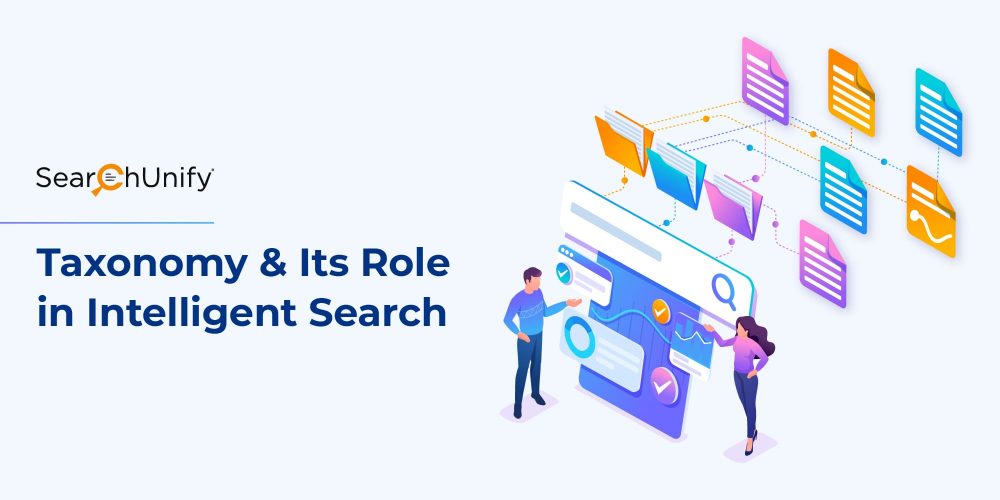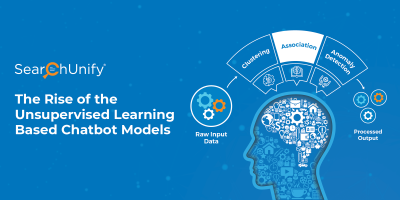
Imagine a library with no computers and no card catalogs for searching the inventory. It would indeed be futile for anyone who is looking for a particular book or topic. The same is the case with the digital world: Businesses are flooded with internal documents and assets that are stored online in disparate systems. Ever since enterprise search engines came into play, retrieving information from humongous databases has become a cakewalk; but contextual relevance is still a question. This brings us to the enterprise-wide taxonomy which addresses this issue and ensures an effective and efficient search experience.
What is taxonomy?
Before we deep dive into how taxonomy has been a game-changer in the knowledge management world, let’s learn more about what taxonomy is. It is just another word for systematic classification. It refers to the set of metadata that are added to the content in order to make working with the humongous databases easier.
To laymanise, taxonomy is data about data that enhances users’ search experience by narrowing down search results. It is also known as “controlled vocabulary” by information science professionals. Regardless of the term, the underlying goal is to provide context to the content and precisely deliver results in a variety of ways.
How important is taxonomy for enterprise search?
Imagine running a search query that leads you to another search: Frustrated with the mere thought of it?
Let’s say a healthcare community with an enterprise search software doesn’t integrate taxonomy. When an end-user runs a query with search keyword “vaccination”, hundreds of results would be produced onto the screen. The reason being that there are too many different classes of things relating to vaccination and typing in that one term doesn’t provide any context to the query. Now, you’ll have to scroll through the entire list to find the most relevant answer to your question.
Taxonomy enables you to add metadata to content, which further helps in contextualization. Once the context of content is in place, the findability of relevant information improves manifold. Additionally, there are ways by which taxonomy assures the mapping of synonyms and acronyms, leading to disambiguation.
What does taxonomy bring to the table?
The efficacy of data increases if both content and context are defined. Taxonomy does exactly the same.
- Entity Extraction: Unstructured documents with no metadata make it difficult for crawlers to retrieve anything meaningful from them. By incorporating taxonomy, cognitive search engines empower crawlers to identify and classify key elements from such documents. Once the structure of the data is in place with this process of entity extraction, search results become more relevant.
- Faceted Search: Only consistent and accurate metadata can help you build robust facets. By helping you add consistent metadata to the content, taxonomy enables faceted search. Additionally, it empowers you to customize the metadata as per your business’ requirements. This way you get to decide what shows up on the left-hand navigation as facets, not an algorithm. Apply filters and facets to your search for ease of navigation and precision.
- Enriched Vocabulary: The inbuilt vocabulary that comes with an enterprise search software is not familiar with your business jargon. Thus, a cognitive search without taxonomy fails to infer intent. Let’s say if you call a document “brochure” and the user looks for the keyword “collateral”, a message saying “No results found” will pop up onto his/her screen. But by mapping synonyms and acronyms with taxonomy, you can save your customers from the dreadful situation. Enterprise taxonomy helps you to train your enterprise search engine and deal with issues of the ambiguity of terminologies.
Can enterprise search engines build taxonomy automatically?
Gone are the days when search engines could be easily tricked. Earlier the frequency of term occurrences led to machine-generated taxonomies; but now engines are technologically-advanced to recognize search patterns of users and define taxonomies accordingly. The AI and machine learning capabilities make enterprise search tools much more than a white box. For example, Entity Extraction helps in auto-categorization of the content and Natural Language Processing (NLP) leads to disambiguation by providing context to the content. All in all the pacing technology has made it possible to embed both manual and automated taxonomies.
Is your enterprise search platform future-ready? What’s the future of enterprise search?
A modern search engine is a lot more than the search box on your site or community. It is a platform, an underlying technology that further powers a number of apps that delight your customers. While making an investment in a search platform, make sure it’s future-ready. To know what a futuristic search platform should look like, download this ebook.














